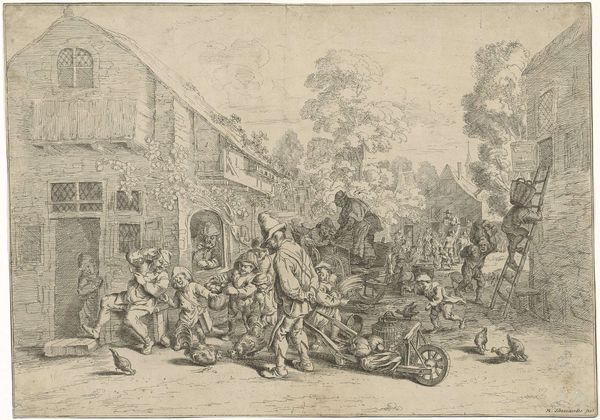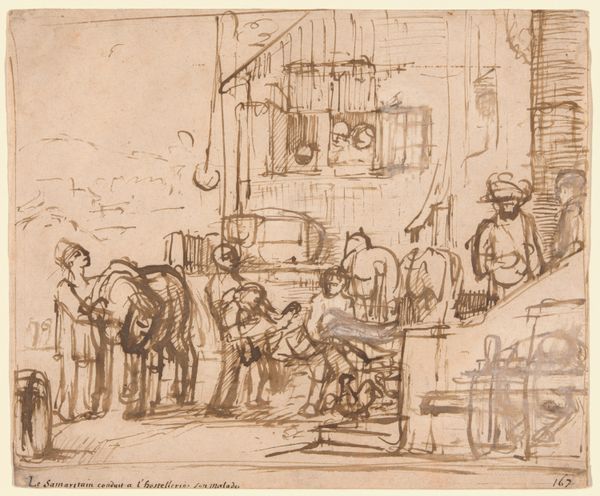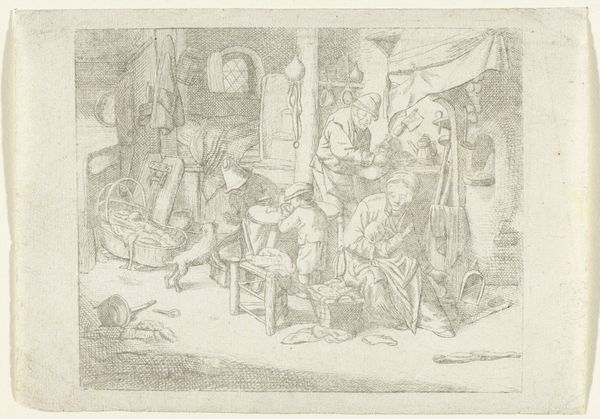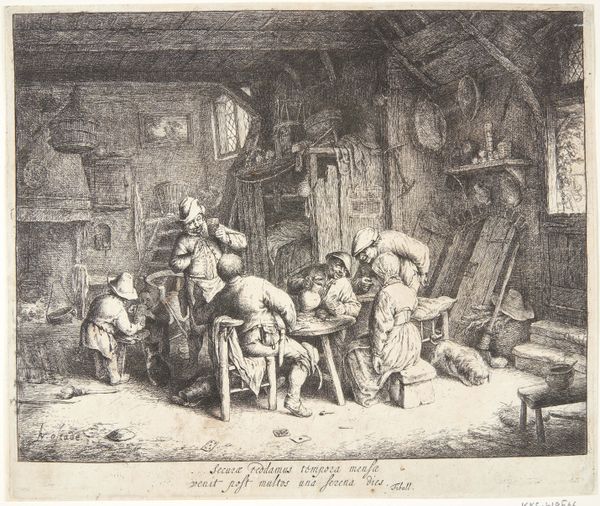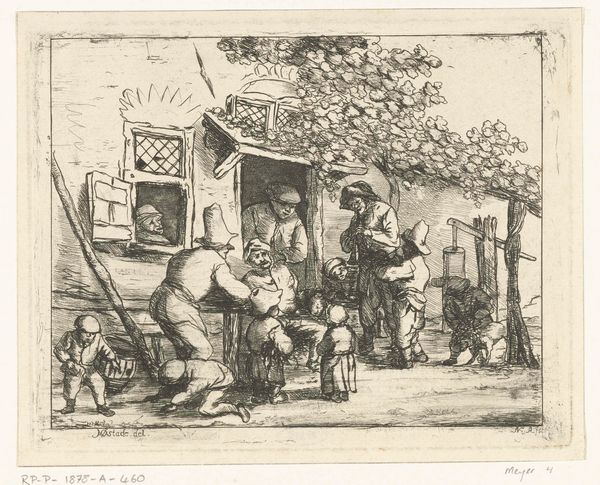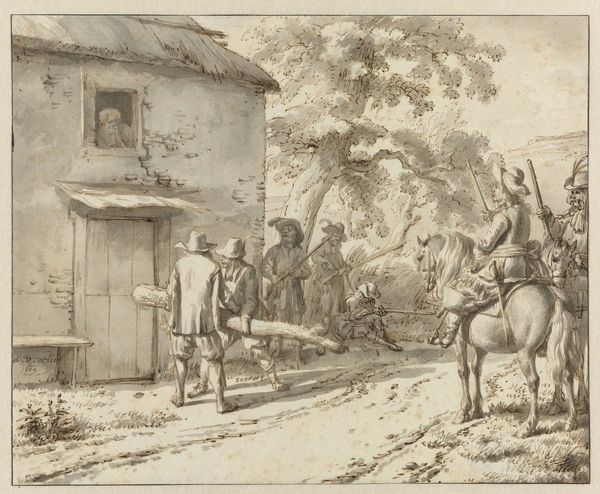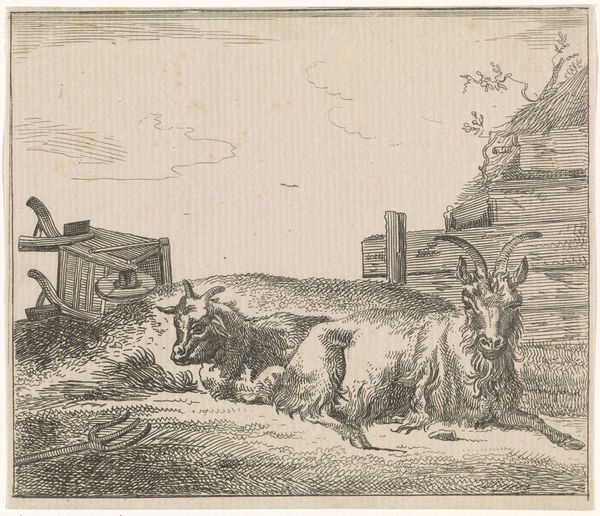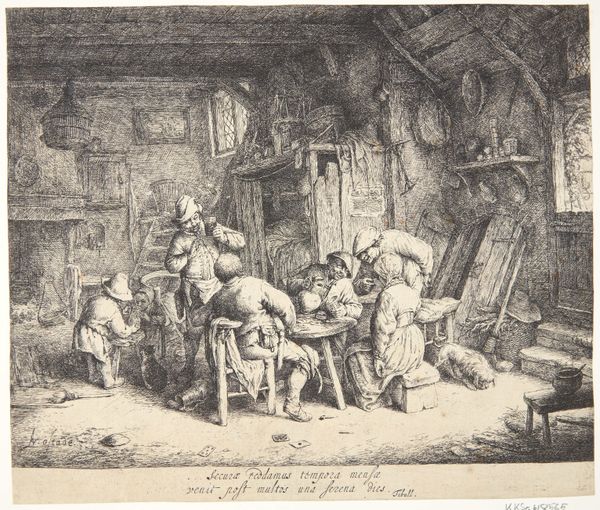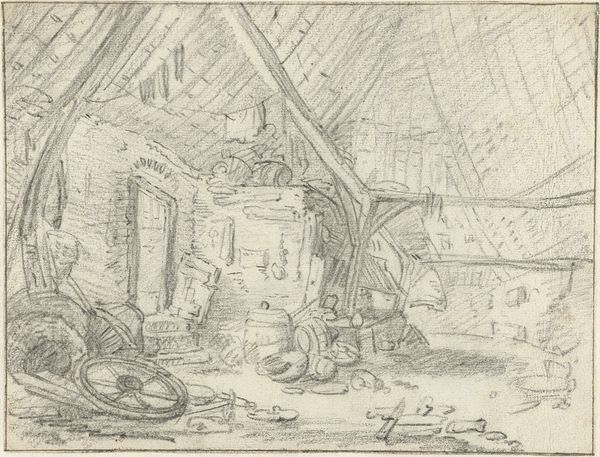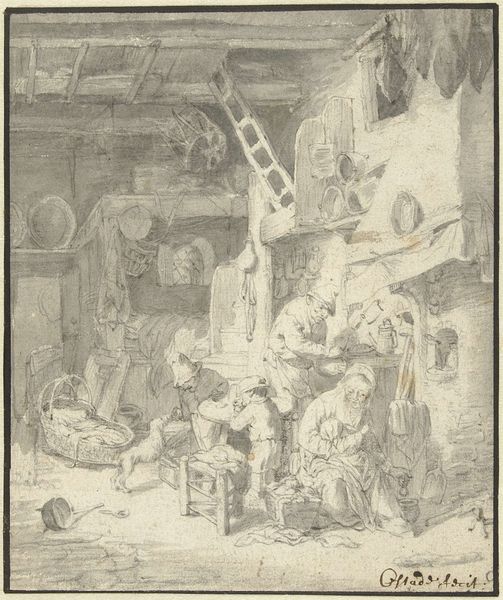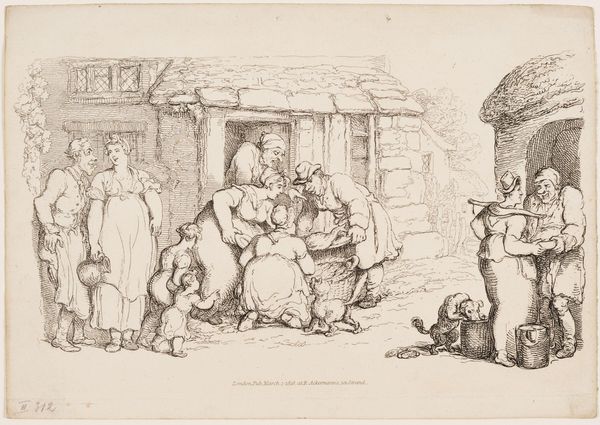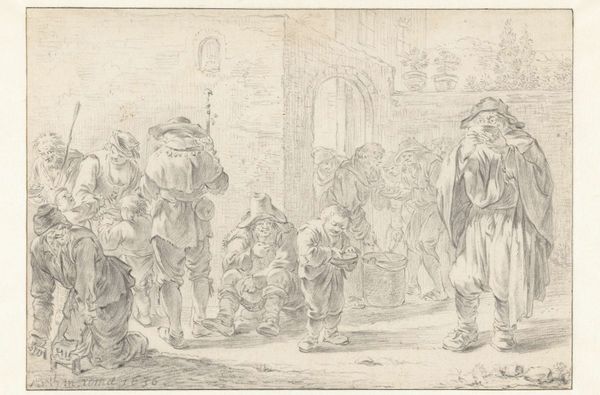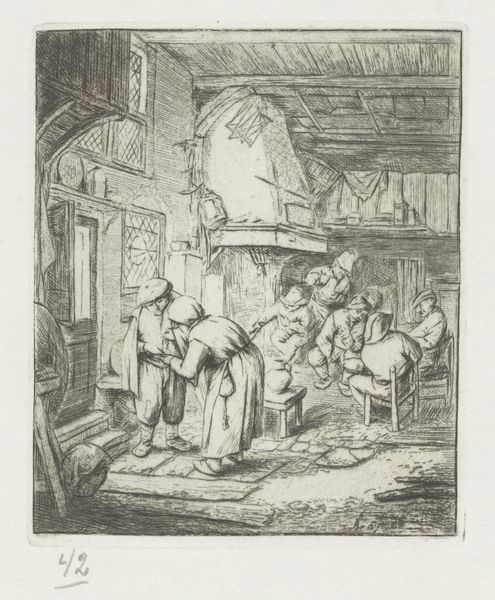
drawing, pencil
#
drawing
#
16_19th-century
#
pencil sketch
#
landscape
#
personal sketchbook
#
pencil
#
genre-painting
#
realism
Dimensions: height 129 mm, width 194 mm
Copyright: Rijks Museum: Open Domain
Editor: Pieter van Loon's 1842 pencil drawing, "Het beladen van een postkoets," captures a scene bustling with activity. There's a definite sense of anticipation and perhaps a hint of social class visible. What jumps out at you when you look at this drawing? Curator: This piece, though seemingly a simple depiction of loading a stagecoach, opens a window onto the socio-economic realities of 19th-century travel. Who had access to this form of transport? What anxieties surrounded this experience for various groups within society? Consider how access to travel was, and still is, a privilege deeply intertwined with race, gender and class. What kind of commentary do you think van Loon might be making? Editor: I see your point. The finer details, like the dress of the passengers and the labor of those loading the coach, definitely highlight those disparities. It does prompt questions about who gets to move freely and who is enabling that movement. Curator: Precisely! And the realism in van Loon's style further emphasizes this. He’s not romanticizing travel; he's showing the labor, the hierarchies, the very material conditions that made it possible. Where do we see this dynamic at play in the contemporary art world today? Editor: I'm thinking about artists who directly address issues of migration and displacement in their work. They expose similar power dynamics, though through a contemporary lens. Curator: Exactly. This drawing isn't just a historical snapshot. It invites us to think critically about how these structures of power persist. What's revealed in this piece echoes into contemporary discourse on power, labor and freedom of movement. Editor: It’s incredible how a simple sketch can reveal so much. I’m definitely going to be paying more attention to those socio-economic elements within art from now on. Curator: I agree; analyzing these historical artworks opens crucial dialogues between the past and the present and empowers us to have nuanced conversations about societal problems today.
Comments
No comments
Be the first to comment and join the conversation on the ultimate creative platform.
